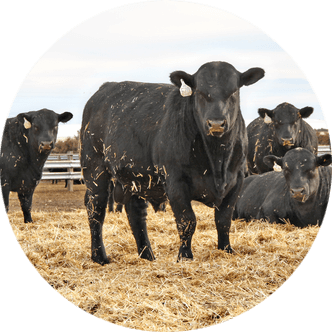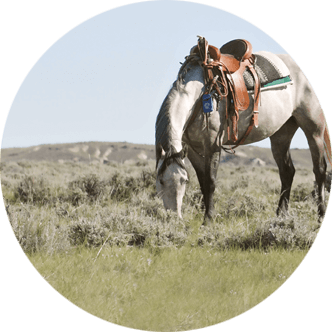U.S. wool labs help move industry forward
From working ranches across the West to university research facilities, America’s wool industry continues to blend tradition with technology.
This is especially true for two of the nation’s leading wool labs – the Montana State University (MSU) Wool Lab in Bozeman, Mont. and Texas A&M University’s (TAMU) Bill Sims Wool and Mohair Research Laboratory in San Angelo, Texas.
During a recent episode of the American Sheep Industry Association’s (ASI) Research Update Podcast, released on Oct. 30, Host Jake Thorne welcomes TAMU Wool Lab Manager Sarah Linton, TAMU Wool Lab Technician Ethan Pope and Macy Collins, MSU PhD student and former member of the University of Wyoming Wool Judging Team, to discuss how their respective labs are helping shepherd wool testing and research today, while also proving high-quality data is just as important as high-quality fiber.
A shared mission
According to Pope, the Bill Sims Wool and Mohair Research Laboratory was founded in 1985 with funding from the U.S. Department of Agriculture, the Texas Agricultural Experiment Station, TAMU and the state’s sheep and goat industry.
Located in the heart of Angora goat country, he explains the lab was established to provide wool and mohair growers with accurate testing and reliable data.
“We opened up for commercial wool testing in 2023 and have been providing this service ever since,” Pope states.
Collins notes Montana’s lab has been serving its producers for even longer.
Originally built in 1945, the structure was utilized as a classroom building for the university, and two years later, the MSU Wool Lab was established to support the state’s booming sheep industry.
“At the time, sheep far outnumbered people in Montana, and because sheep and wool production are so important, the state decided it needed a reliable hub for testing and improving wool quality,” Collins explains.
“Since then, the lab has been providing producers – mostly in the state of Montana, but throughout other states as well – with quick wool data,” she adds.
Despite being separated by more than a thousand miles, the two labs share an overarching mission and a close working relationship.
Linton notes the two labs help each other validate test results, while also collaborating with ASI and other universities, like Idaho State University and the University of Nebraska.
Additionally, both labs participate in international round trials with labs in Australia and New Zealand and follow strict standards set by the International Wool Textile Organization (IWTO).
“IWTO certification increases trust and what buyers are willing to pay for wool,” Pope remarks. “I think IWTO is a big deal for wool testing in the U.S.”
Testing and research
Both labs conduct rigorous testing to measure characteristics such as fiber diameter, micron, staple length, comfort factor and yield, all of which are essential metrics influencing the value and marketability of wool.
Collins explains Montana’s lab utilizes the Optical Fiber Diameter Analyzer, which uses infrared laser scanning to assess wool samples sent in by producers.
These results not only indicate fiber quality, they also help ranchers make management and breeding decisions.
“Wool traits are highly heritable, which means they are passed down through generations,” she says. “Producers use this to their advantage when it comes to making decisions about which rams or ewes get culled and which ones have the capability to potentially improve their numbers and/or wool clip.”
At the TAMU lab, Linton says most wool samples arrive as commercial cores. Technicians then perform a series of tests to determine vegetable matter, residual grease, ash content and micron, all of which contribute to a final yield report.
Both labs are also home to notable research studies, including fiber length and strength testing, increasing marbling of lamb and exploring alternative fibers like alpaca, vicuña and hemp, to name a few.
“Right now, we’re working on a big project testing vicuña fleeces, which are just small alpacas from South America,” Collins shares. “We also do a lot with hemp testing as well.”
She further notes, since microplastics are a growing concern, MSU has been looking at blending wool with organic fibers like hemp to make natural fibers more sustainable.
Additionally, MSU researchers are experimenting with wool pellets as a slow-release fertilizer and soil enhancer.
“Wool pellets have been used by small gardeners for a long time, but we’re doing a lot of research at MSU right now to see if we can expand to a commercial setting to be used on larger farm plots,” Collins says.
“Our research is really focused on finding alternative uses for wool to help producers who don’t fit into a specific category sell their wool and get money for their product,” she continues. “Wools pellets are a way to create value for coarser wools that don’t meet apparel-grade micron thresholds. It can help producers find markets for wool which might otherwise sit in storage.”
Moving forward
As MSU researchers continue moving the industry forward, Collins notes the lab is preparing to move out of its original 1940s-era building and into a new state-of-the-art facility.
“In the old 1947 building, we have a lot of limitations. We still have to mop the floors and use buckets of warm water to increase humidity and temperature, which is quite a daily errand,” she laughs. “Having a temperature- and humidity-controlled environment is going to be wonderful. I’m really looking forward to never having to fill buckets of warm water again.”
Collins further notes the move will allow for expanded equipment and testing capacity, including fiber strength and laser scan technology.
In Texas, Pope says the TAMU wool lab team will continue to utilize its proximity to sheep and Angora goat producers, offering hands-on services and educational outreach.
“A lot of growers come in and drop their samples off in person here at the lab instead of mailing them in,” he shares. “We get to meet them and talk to them in person, and it’s good for them to see the lab and what goes on in here.”
As the wool market evolves, both labs see opportunities in stronger data, better testing tools and greater global alignment.
“Length and strength testing will be a game changer,” Linton says. “It will help producers get more value for their wool.”
Collins agrees, adding the future of U.S. wool depends on innovation and accessibility.
“We need to help producers reach their goals, whether it’s through breeding, management or finding alternative uses for their wool,” she says. “Good data leads to good fiber, which leads to a stronger industry.”
Thorne wraps up the podcast, stating, “Until next time – eat lamb, wear wool and remember, good data makes great fiber and great sheep.”
Hannah Bugas is the managing editor of the Wyoming Livestock Roundup. Send comments on this article to roundup@wylr.net.





